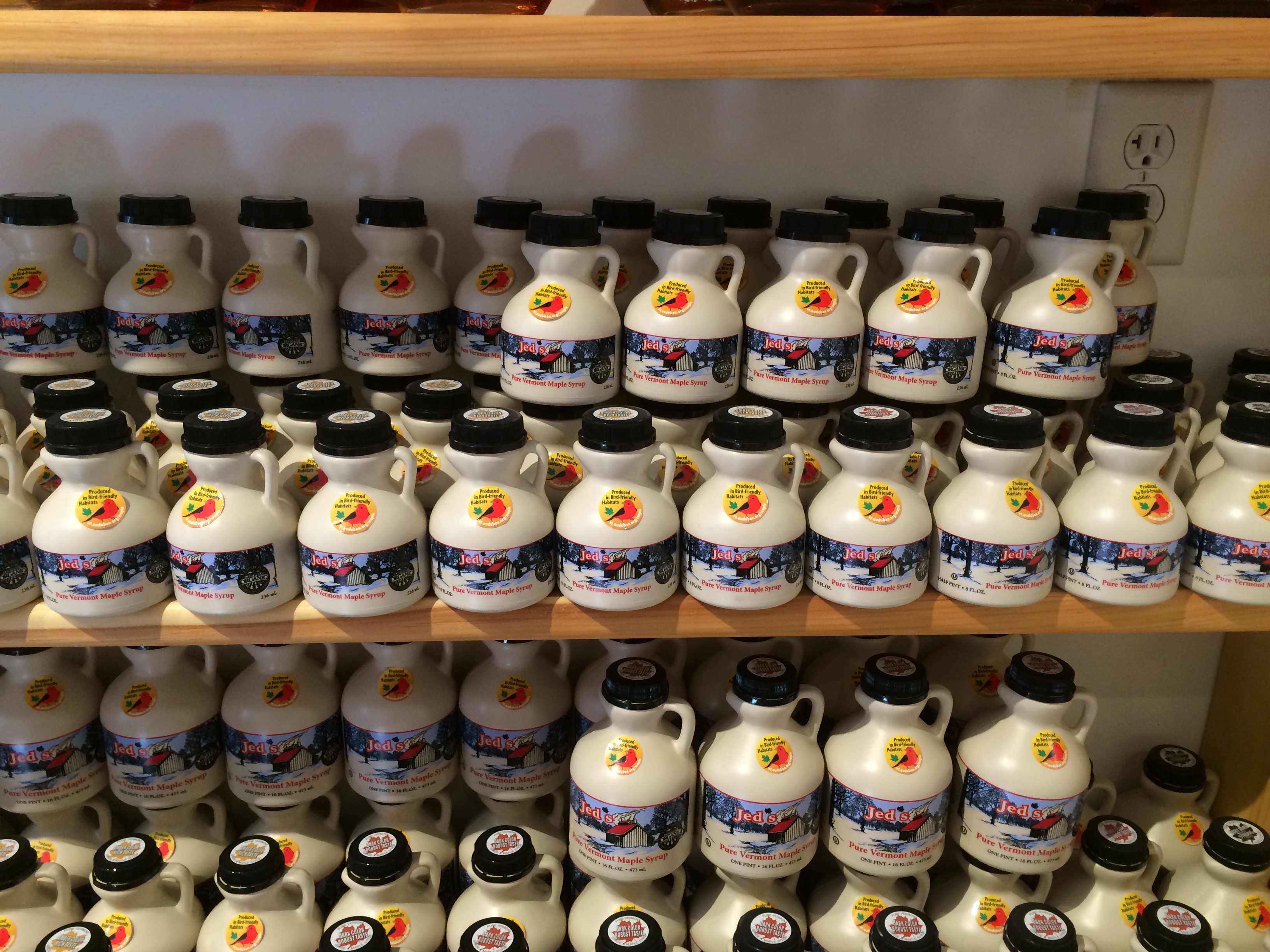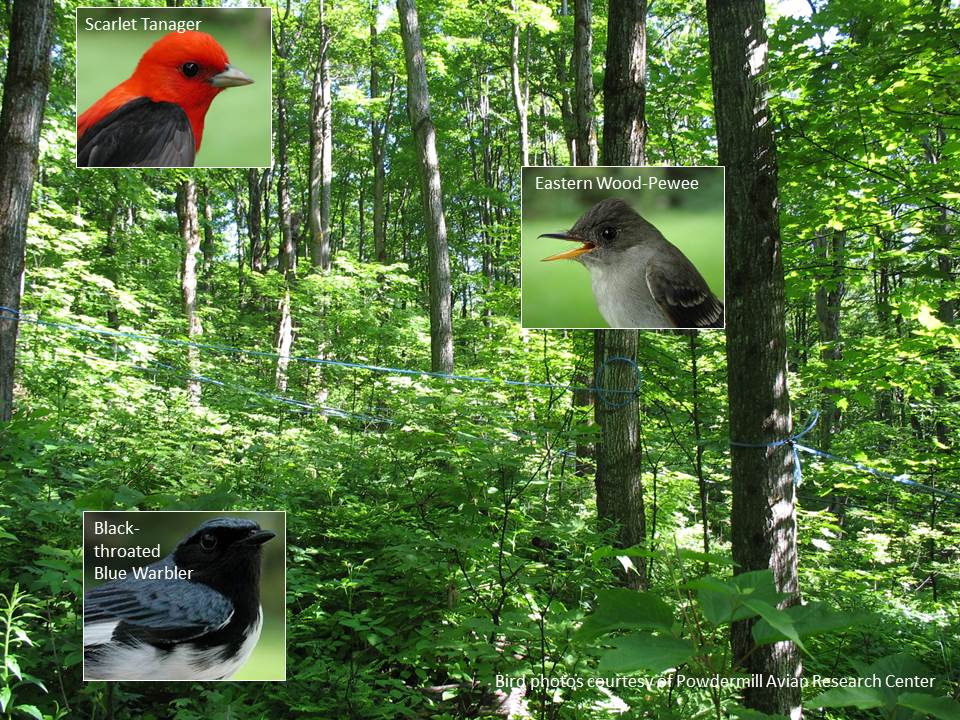Sugarbush Management
Bird-friendly maple project catching on in Vermont
Sugarmakers signing up to provide habitat
By PAUL POST | JULY 23, 2018
MONTPELIER, Vt.—Gallons of fresh maple syrup -- 139,179.
Market value -- $5.5 million.
Birds protected in 6,000 acres of Vermont sugarbush where specially-labeled syrup is comes from -- priceless.
To date, 27 producers have signed up for the Audubon Vermont Bird-Friendly Maple Project that encourages best practices such as tree diversity, forest regeneration, combating invasive species, and creating nesting sites on forest floors, all with a goal of making Northeast woodlands more welcoming to birds that depend on them for their very survival.
Sugarbushes are inherently good for birds, said project founder Steve Hagenbuch, an Audubon Vermont conservation biologist, licensed state forester and small-scale maple producer. One of the greatest current threats to forest birds is the conversion of their habitat to a non-forest condition. Sugarbushes keep forest as forest and thats a very good thing. The subsequent management of that sugarbush, however, determines whether the habitat is just okay or high quality. High-quality means that birds are able to successfully raise the next generation of their species.
Some birds such as the black-capped chickadee and pileated woodpecker are year-round residents. However, the project is largely focused on 40 responsibility species of birds that winter in Mexico, Central America and even South America, and fly north in spring.
Birds on this list have experienced either significant declines in their breeding range, such as the wood thrush; or a high percentage of their breeding population is found in the Northeast, such as the black-throated blue warbler (33 pct.) -- or both.
The latter is example of proactive conservation, Hagenbuch said. Working to keep a common species common by making sure we ensure high-quality habitat on the ground now so that it doesnt become rare, threatened or endangered in the future.
Other species targeted by the Bird-Friendly project include the black-throated green warbler, ovenbird, eastern wood-pewee, yellow-bellied sapsucker, American redstart, veery, and scarlet tanager -- the colorful red bird used on Bird-Friendly syrup labels and signage, which helps producers market to environmentally conscious consumers.
To get such designation, Hagenbuch conducts a thorough sugarbush inventory and assessment. Results are compared with Bird-Friendly criteria, and any gaps are noted in a written report. If the producer agrees to manage woods to eliminate gaps and meet Bird-Friendly criteria, theyre allowed to affix labels to their maple products, have signage indicating their program participation, and be added to the Audubon Vermont website where all participating producers are listed.
The project, launched in 2014 with funding from the Vermont Community Foundation, is collaborative effort involving Audubon Vermont, the state Department of Forests, Parks and Recreation, and Vermont Maple Sugar Makers Association.
The response thus far has been very good, he said. Many producers believe that the forests long term health and sustainability is an absolute necessity.
Cecile Branon, of Branon Family Maple Orchards in Fairfield, said, You want a healthy forest to grow healthy trees. Our forest are forever. They are for the generations to come. We think the evaluation helps us back up the forest management plan that youre doing a good job in the woods to keep animals and trees healthy.
Others have gotten involved primarily for potential marketing benefits.
Green Mountain Audubon Centers sugarhouse in Huntington was the first participating producer. Now, 26 others are realizing the programs financial and ecological benefits.
Our customers are very enthusiastic about the bird-friendly certification, said Chaska Richardson of Couching Lion Sugar Farm, also in Huntington. Were currently working with Wake Robin Independent Living/Senior Community, in Shelburne, to provide syrup for their dining room. Their residents want to learn more about the Bird-Friendly certification, so hopefully well partner with Audubon to bring some informational sessions. Were also partnering with the Burlington School District food service, another organization that loves the bird friendly certification and wants to learn more about native species and protecting their habitat.
Sugarmaker Eric Sorkin, of Runamok Maple in Cambridge, got involved with Audubon Vermont after learning about the Bird-Friendly project and is now an Audubon board member. Its a great way for sugarmakers to communicate with the consumer that maple is a wild crop, and that what we do is beneficial to birds and wildlife in general, he said. We have a number of retail partners that explicitly work with us because of our commitment to bird-friendly woods management. It is a distinguishing feature for us, and we have had several examples of consumers searching us out explicitly because of our participation in the program.
Sorkin said he and his wife, Laura, were already committed to managing woods in a way to promote diverse wildlife habitat, so joining the program was a natural next step.
We dont remove snags, or brambles, nor do we manage our woods for exclusively maple production, he said. After Audubons thorough review of our woods we incorporated some of the specific criteria into our forest management plan. As a result, we are more proactive in thinking about bird habitat as a management objective.
Jessica Boone of Hi Vue Maples, in Richford, supports Bird-Friendly Maple wholeheartedly.
Stewardship of the land is very important to us, she said. If we take care of it, it will take care of us. I love knowing that were one slice of the pie in the worlds largest temperate forest. The fact that its so important to song birds and other species gives me incentive to maintain it the way it should be. I can do this by increasing my retail market so I have the revenue to do so. I do think there are consumers that will look for companies that hold these values.
In June, Hi Vue will host a Tree to Table event that will include a bird guide to help identify some of the song birds in the Bird-Friendly program.
Meghan Jarvis, of The Vermont Maple Farm, in West Topsham, said she never realized how many different species of birds were on her property until Hagenbuch paid a visit. Steve came and walked through our entire sugarbush to make sure that we qualified for this project, she said. He had different GPS coordinates and checkpoints to measure our tree density and diversity, canopy cover and levels of canopy. He identified birds that we didn't even know were there. This was a wonderful learning experience.
The project encourages land owners to adopt fairly simply, yet effective practices that foster bird habitat. The four main criteria are:
* Promoting healthy diversity of trees. As tree diversity increases, bird species diversity and abundance of overall birds increases.
* Forest regeneration. Most birds nest in the first 30 feet of the forest floor. This understory and midstory vegetation is also the future forest. Sugarbush management can tend to current tappable trees through thinning, but leave out the need to think longer term and establishing and growing the next generation of trees
* Leaving woody material on forest floor. Large logs and brush piles are used by birds both for courtship displays, a source for insect food source and cover from predation. This downed woody material also plays an important role in forest nutrient recycling and protecting regeneration.
* Managing non-native and invasive species. This plants reduce insect diversity, a key food source for the birds during the nesting season, and many also produce a fruit that doesnt have the same nutritional quality as native plants. This is critical when birds are trying to build fat reserves for migration. At the same time a high proportion of non-native plants in the forest can make regeneration of native trees and shrubs very difficult.
This program brings together two high-profile aspects of Vermonts forestland, Hagenbuch said. Vermont is the number one maple producing state in the country, and provides summer nesting habitat for some of the greatest diversity of bird species found anywhere in the country. Many producers are already doing great things with their sugarbush stewardship, but have not had a meaningful way to be recognized for it. This project provides that recognition.
Neighboring states such as Maine, New Hampshire and New York have expressed interest in replicating the project. The key is developing strong partnerships among key stakeholders, he said.

































